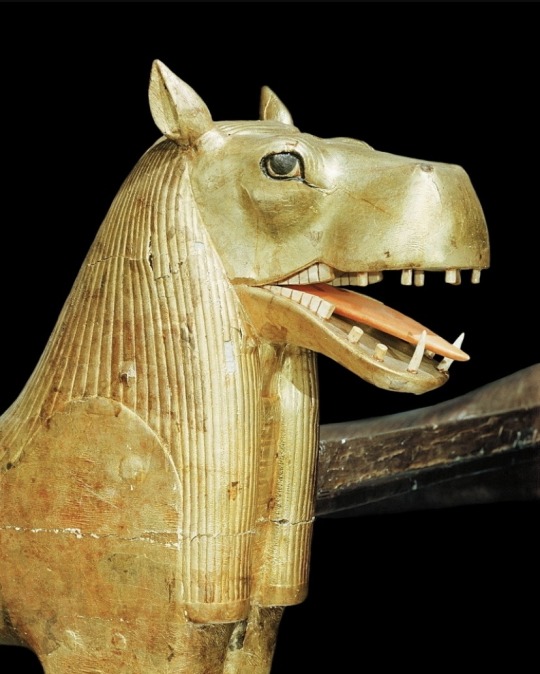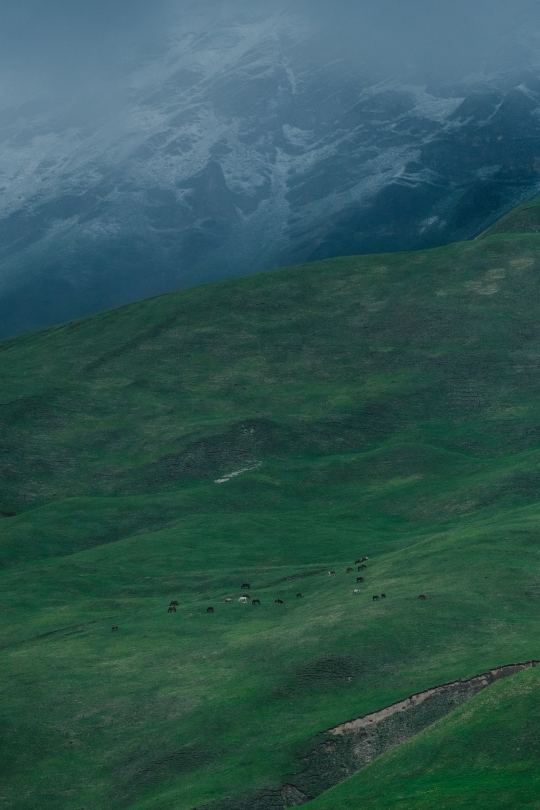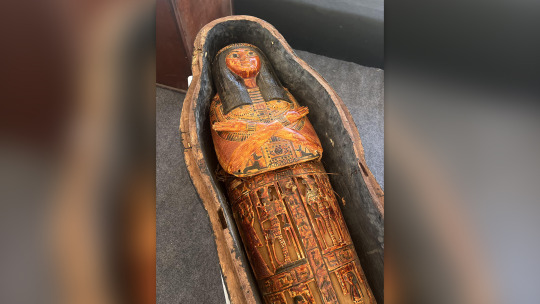#archaeology of the dead
Explore tagged Tumblr posts
Text



Academic Failure
via @loneviatoris
#archaeologist#archaeozoology#zoology#archaeology of the dead#dark academia#chaotic academia#aesthetic#mentally unstable#me#alternative model#outfit#spooky#grunge vintage#trench coat#trench#redesign#post#restyling#emo#🌤:post
3 notes
·
View notes
Text

~ Vignette from funerary papyrus (Book of the Dead) from papyrus N 3149.
Period: Ptolemaic Period
Medium: Papyrus
#ancient#ancient art#history#museum#archeology#ancient egypt#ancient history#archaeology#egyptian#egyptology#egypt#book of the dead#funerary art#funerary papyrus#papyrus#sistrum#hieratic#crown#atum#vignette#Ptolemaic Period
677 notes
·
View notes
Text

They stand there for a moment longer, smiling at each other, before Edwin’s gaze falls back to the bones in the display case. “You know, there’s somewhat of an ethical debate about keeping human remains on display. But I’m glad that these are here, because as you said—she’s not forgotten. She’s here, part of her own story, and no longer disrespectfully shoved under the floor and hidden from sight. It’s not... justice, not really, but it’s a better outcome than many can hope for.”
From love, in context B24-16, the archaeology payneland au of my dreams, by @experimentaldragonfire. (Art by me.)
#payneland#dead boy detectives#dbda#dead boy detectives art#dbda art#fic rec#archaeology au#my art#i have mixed feelings about human remains on display#so i did not actually draw the bones in the case
215 notes
·
View notes
Text

Head of a funerary couch, in the shape of Ammit 😛
Ammit is a celestial beast who bestows final judgement on the deceased and devours the unjust in the court of Osiris.
Populalrly depicted in funerary texts like the Book of the Dead, Ammit is usually a combination of a crocodile's head, the front legs of a lion, and the hindquarters of a hippopotamus.
Found among three ritual funerary couches in Tutankhamun's antechamber and made of stuccoed gilded wood with each animal's eyes inlaid with colored glass paste, this particular couch is variedly composed of a curiously different configuration: a hippopotamus' head wearing a wig, a leopard's body, and a crocodile's tail and crest
#art#weird#archaeology#sculpture#ancient#ancient art#tutankhamen#tutankamon#ancient egypt#egyptology#egypt#egyptian art#ancient egyptian art#funerary customs#funerary art#book of the dead#ammit#kemetic#ancient kemet#kemet
589 notes
·
View notes
Text

Hathor in bovine form in a copy of the Book of the dead, emerging from a hill representing the Theban necropolis.
340 notes
·
View notes
Photo


Dargavs, Russia by Rogov
The village of Dargavs, or the City of the Dead, has an ancient cemetery where people that lived in the valley buried their loved ones along with their clothes and belongings. The valley stretches for 17 kilometers, and the cemetery contains almost 100 ancient stone crypts.
#village#russia#landscape#nature#mountains#architecture#city of the dead#history#archaeology#curators on tumblr#uploads
891 notes
·
View notes
Text

fuck bettober now I have a whole mermaid au in my head
#she drags that poor guy into her grotto and makes him marry her cause he can turn book pages for her without getting them all wet#betty grof#petrigrof#straight up never returns from his archaeological expedition presumed dead by his peers
45 notes
·
View notes
Text
I need a Lovecraftian-style story in which an explorer finds an ancient inscription on a stone monolith, written in a forgotten language, in the antediluvian ruins of a lost city of which only legends formerly spoke.
And then someone translates it, and it turns out to be some king’s plans for an irrigation system.
#if fiction worked like real life#archaeology#epigraphy#lovecraftian#lovecraftian horror#eldritch horror#ancient languages#lost city#dead languages#lovecraft#h.p. lovecraft
99 notes
·
View notes
Text
52-foot-long Book of the Dead papyrus from ancient Egypt discovered at Saqqara

Archaeologists in Egypt have discovered a 52-foot-long (16 meters) papyrus containing sections from the Book of the Dead. The more than 2,000-year-old document was found within a coffin in a tomb south of the Step Pyramid of Djoser at Saqqara.
There are many texts from The Book of the Dead, and analysis of the new finding may shed light on ancient Egyptian funerary traditions. Conservation work is already complete, and the papyrus is being translated into Arabic, according to a translated statement, which was released in conjunction with an event marking Egyptian Archaeologists Day on Jan. 14.
This is the first full papyrus to be uncovered at Saqqara in more than 100 years, Mostafa Waziry, secretary general of the Supreme Council of Antiquities, said, according to the statement. Read more.
624 notes
·
View notes
Text
by Sophie Kalmin
The Roman period left various indelible marks on the Jewish psyche, further exhibited by the remains of the Masada fortress. Excavated in the 1960s, King Herod’s first-century BCE stronghold serves as a powerful symbol of Jewish resilience. It was at Masada that Jewish rebels stood firmly against the Romans before the fortress was destroyed, and the Romans marked another victory over the land’s people. Today, Masada serves as one of the most popular tourist sites in Israel, in which visitors can interact with ancient cisterns, pottery, and engineering feats completed by Jewish architects. With areas of the fortress still yearning to be excavated, Masada prevails as one of the most poignant reminders of the Jewish connection to the Land of Israel — Jewish people died defending it thousands of years ago.

Historians say…
Beyond archaeology, the writings of Flavius Josephus, a first-century Jewish historian, provide an insider experience of Jewish life and Roman governance in Judea. In his work Antiquities of the Jews, Josephus details the Roman administrative presence in the region, including the taxation policies implemented by the governor of Syria, Cyrenius. Flavius notes, “Moreover Cyrenius came himself into Judea, which was now added to the province of Syria, to take an account of their substance, and to dispose of Archelaus’s money.” This account emphasizes both Jewish property and economic activities in Roman Judea. Josephus’s comprehensive records serve as a critical source, underscoring the continuous Jewish involvement in this land across millennia.
Benjamin Tudela, the 12th-century author of The Itinerary of Benjamin of Tudela, records Jewish activity at the Cave of Machpelah. Tudela, a Jew living in the Middle Ages, describes the religious practices being exercised distinctly at this place. He writes that casks of generations of Israelites are buried within the cave and that our forefathers constructed “a gate of iron” to protect those visiting their loved ones’ remains. Because of Tudela, the stories of connection between Jewish people and their ancestors buried in the Land of Israel resonate more deeply.
Lasting Jewish Practice
The discovery of the Dead Sea Scrolls in the early 20th century provides arguably the most compelling evidence of the Jewish people’s enduring connection to their land and heritage. These ancient manuscripts, which date back to the last three centuries BCE and the first century CE, include the earliest known copies of the Hebrew Bible, providing invaluable insights into Jewish life, law, and beliefs during the Second Temple period. Written in Hebrew, Aramaic, and Greek, these scrolls are a powerful symbol of Jewish spiritual and intellectual resilience. Their survival over two millennia affirms the enduring legacy of Jewish scholarship and the community’s unwavering commitment to preserving their sacred texts.

Israel is the Jewish Homeland
When British ships landed in North America in the late 16th century, they didn’t dig up Shakespeare plays and find ancient coins minted in English. By definition, colonial powers are not indigenous to the places they colonize. Jews have maintained a continuous presence in Israel since Judaism’s inception, despite numerous conquerors that have come along and expelled the Jews from their land. These exiles are not only thoroughly documented in Jewish literature and cultural evolution, but in continuous archaeological findings. Failed attempts to eradicate the Jewish people from their land have reinforced the urgency of the lasting existence of a Jewish country.
50 notes
·
View notes
Text

One guy showed up to surface surveys wearing a white shirt, vest, this type of trousers that men wear for formal occasions and leather shoes with spiky toes... to spend a long time walking through meadows and freshly plowed field. At first I sort of couldn't believe my own eyes when i was noticing more details of his unusual outfit haha. I'm dying to see him again at the other university, i NEED to know if this is just how he dresses everyday or if it was a formal outfit specifically choosen for fieldwork
#i respect his choice either way#i really like when ppl look different#and when you can see that theyre doing ther own thing#when they have their own style#you do you#i keep noticing it more and more in all kinds of context: the is a LOT of autism in archaeology#moje#my pic#dead things
16 notes
·
View notes
Text

love, in context B24-16 G, M/M, ~12,000/? words, 3/4 chapters
There’s a boy leaning against the fence. He’s putting most of his weight on it, arms propped up by their elbows and staring with rapt interest at the excavations. It’s been half an hour, now, and he hasn’t moved an inch. If he hadn’t been otherwise preoccupied with delicately troweling between third-century cobblestones, Edwin might have worried about the boy’s mental state. As it was, he’d been studiously ignoring the way he can feel eyes tracking his every movement. He thinks he’s been quite successful, so far. or: archaeology student Edwin Payne didn't expect the chatty tourist at the excavation fence to become someone he couldn't imagine life without
Chapter 3: ~5,700 words
in which there's rain on the excavations, impromptu museum dates, and a dramatic ending--or, this fic grew a plot and i'm so, so sorry
oops, it got serious and I made an actual promo post for this fic. if you like modern AUs of the ghost boys in very niche situations, you might enjoy me sticking them in some archaeological excavations based quite heavily on ones I've done myself. This fic keeps demanding each chapter be longer than the one previous and at this rate I'm fairly certain the next one will be about 8k. send help.
#lucy's thoughts#my writing#dead boy detectives#payneland#dbda#dead boy detectives fanfic#dbda fic#throws this out there into the void and runs away#yes! this photo is one i took myself of a wall i excavated! it was pretty cool!#unfortunately archaeological excavations look really boring in pictures#so you will just have to trust me (which. why would you do that. i find walls exciting to excavate)
28 notes
·
View notes
Photo

(via Homo naledi were burying their dead at least 100,000 years before humans | Ars Technica)
Now the same expedition team has announced the discovery of H. naledi bodies deposited in fetal positions, indicating intentional burials. This predates the earliest known burials by Homo sapiens by at least 100,000 years, suggesting that brain size might not be the definitive factor behind such complex behavior. The team also found crosshatched symbols engraved on the walls of the cave that could date as far back as 241,000–335,000 years, although testing is still ongoing...
"I think we are facing a remarkable discovery here of hominids with brains a third the size of living humans, and slightly larger than chimpanzees, burying their dead—something previously only found in large-brained hominids—as well as etching meaning-making symbols on the wall," said Lee Berger, a paleoanthropologist and National Geographic Explorer in Residence who leads the Rising Star Project. "This would mean not only are humans not unique in the development of symbolic practices, but [they] may not even have invented such behaviors."
402 notes
·
View notes
Text
I am begging academics to realise that ancient people had emotions too.
#if I have to read one more article about upholding state values when it’s the literal tombstone of a dead little girl holding her pet dove#I will scream#archaeology#academia#ancient history#classics#tagamemnon#studyblr
366 notes
·
View notes
Text
What if stars are nothing but homes to souls, places from where we all descend to our transient abode? You and I, are from the same home, for I find the indistinguishable gleam entangled in both our souls. oh, remember the day we met and my soul confessed to yours? after an ocean of eternity, it'd again felt like home. perhaps, the memories of us dancing in stardust had lingered on for too long. now, the windows to the universe where I belong- Your eyes, my Lord, is the only place I want to live for. for the world has always been a sadistic place, and we? intertwining souls.
Insta @diaryofcursedroses
#authors#love#poem#original art#artwork#archaeology#astronomy#star wars#night sky#milky way#space#books#in stars and time#starry sky#motivational#art#artists on tumblr#quoteoftheday#quotes#literature#life quotes#quotations#lit#dead poets society#dead poets aesthetic#dead poets fandom#dead poets headcanons
23 notes
·
View notes
Photo



Ancient Egyptian cemetery holds rare 'Book of the Dead' papyrus and mummies | Live Science
79 notes
·
View notes